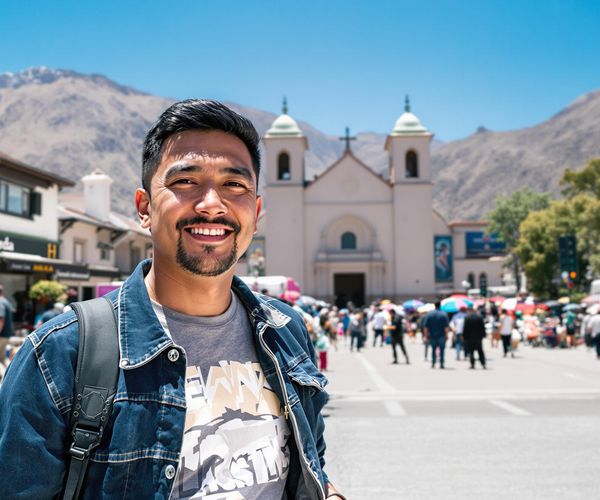
Huaraz: The Heartbeat of the Peruvian Andes
Discover Huaraz, the gateway to the Peruvian Andes, where breathtaking landscapes, vibrant culture, and ancient history create an unforgettable adventure.
Nestled high in the Peruvian Andes, Huaraz is a city that beckons adventurers and nature lovers alike. Known as the 'Switzerland of Peru,' this charming city is the gateway to the Cordillera Blanca mountain range, home to some of the highest peaks in the Americas. The stunning landscapes provide a perfect backdrop for a wide array of outdoor activities, from trekking and climbing to mountain biking and paragliding. Beyond its natural beauty, Huaraz boasts a vibrant local culture and rich history. The city is dotted with traditional markets where you can immerse yourself in the daily life of the Andean people. The colorful stalls overflow with fresh produce, handmade crafts, and warm smiles. Don't miss the chance to savor local delicacies such as 'cuy' (guinea pig) and 'pachamanca' (a traditional dish cooked in an earth oven). For those interested in history, Huaraz offers an intriguing glimpse into Peru's ancient past. Nearby archaeological sites like Chavín de Huántar provide a fascinating look at pre-Incan civilizations. The city's museums, such as the Ancash Archaeological Museum, house an impressive collection of artifacts and art that offer deeper insights into the region's heritage. Whether you're scaling snowy peaks, exploring ancient ruins, or simply soaking in the local culture, Huaraz promises an unforgettable experience. Its blend of natural wonders and rich traditions makes it a unique destination that captures the essence of Peru.
Local tips in Huaraz
- Altitude Acclimatization: Spend a couple of days acclimatizing to the high altitude before embarking on strenuous activities.
- Visit in Dry Season: The best time to visit Huaraz is during the dry season, from May to September, for clear skies and optimal trekking conditions.
- Local Guides: Hire local guides for trekking and climbing; they offer invaluable knowledge and ensure your safety.
- Cash is King: Carry enough cash, as ATMs can be scarce in remote areas and many places do not accept credit cards.
- Layer Up: Weather can change quickly in the mountains. Dress in layers to stay comfortable throughout the day.
Huaraz: The Heartbeat of the Peruvian Andes
Nestled high in the Peruvian Andes, Huaraz is a city that beckons adventurers and nature lovers alike. Known as the 'Switzerland of Peru,' this charming city is the gateway to the Cordillera Blanca mountain range, home to some of the highest peaks in the Americas. The stunning landscapes provide a perfect backdrop for a wide array of outdoor activities, from trekking and climbing to mountain biking and paragliding. Beyond its natural beauty, Huaraz boasts a vibrant local culture and rich history. The city is dotted with traditional markets where you can immerse yourself in the daily life of the Andean people. The colorful stalls overflow with fresh produce, handmade crafts, and warm smiles. Don't miss the chance to savor local delicacies such as 'cuy' (guinea pig) and 'pachamanca' (a traditional dish cooked in an earth oven). For those interested in history, Huaraz offers an intriguing glimpse into Peru's ancient past. Nearby archaeological sites like Chavín de Huántar provide a fascinating look at pre-Incan civilizations. The city's museums, such as the Ancash Archaeological Museum, house an impressive collection of artifacts and art that offer deeper insights into the region's heritage. Whether you're scaling snowy peaks, exploring ancient ruins, or simply soaking in the local culture, Huaraz promises an unforgettable experience. Its blend of natural wonders and rich traditions makes it a unique destination that captures the essence of Peru.
When is the best time to go to Huaraz?
Iconic landmarks you can’t miss
Main Square of Huaraz
Explore the vibrant Main Square of Huaraz, a cultural hub surrounded by stunning landscapes, artisan crafts, and local delicacies.
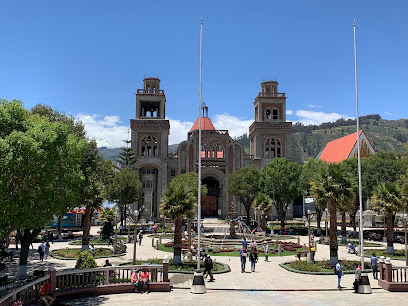
Mercado Central de Huaraz
Discover the heart of Huaraz at Mercado Central, where vibrant local culture, fresh produce, and unique handicrafts await.

La Brasa Roja
Experience the vibrant flavors of La Brasa Roja in Huaraz, Peru, offering a delightful menu of grilled chicken, hamburgers, pizzas, and more.

Trivio Resto Bar
Experience the vibrant flavors of Peru at Trivio Resto Bar, a culinary gem in Huaraz offering a unique dining atmosphere and exceptional service.

Cafe Andino
Discover the rich flavors of Peru at Cafe Andino, a top destination in Huaraz for food and coffee lovers alike.

Real Hotel Monterrey
Discover comfort and adventure at Real Hotel Monterrey, your perfect base for exploring the majestic landscapes of Huaraz, Peru.

Manka Fusión Artesanal
Discover the rich flavors of Peru at Manka Fusión Artesanal, a unique restaurant in Huaraz blending traditional and artisanal cuisine.

Mi Comedia - Pizzeria
Discover the authentic taste of Italy in Huaraz at Mi Comedia - Pizzeria, where every meal is a culinary adventure amidst stunning Andean scenery.

Creperie Patrick
Experience authentic French cuisine with delightful crepes in Huaraz, Peru's charming Creperie Patrick, where every bite is a taste of France.

Mirador de Rataquenua
Experience the awe-inspiring beauty of the Andes at Mirador de Rataquenua, a must-see tourist attraction in Huaraz, Peru.

Templo de Wilcahuain
Explore the Templo de Wilcahuain, an archaeological marvel in Independencia, Peru, revealing the mysteries of ancient Andean civilizations amidst stunning landscapes.
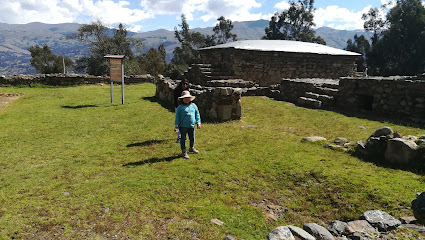
Regional Museum of Ancash
Discover the fascinating archaeological treasures and rich history of the Ancash region at the Regional Museum of Ancash in Huaraz, Peru.
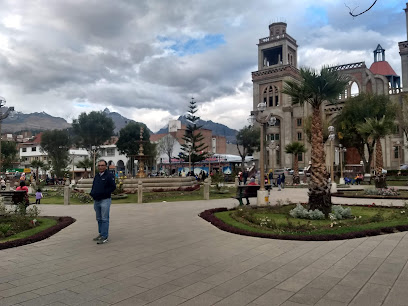
EL RINCONCITO MINERO
Experience authentic Peruvian flavors at El Rinconcito Minero, a culinary gem in Huaraz, where tradition meets taste in a cozy atmosphere.

California Café
Discover the vibrant flavors of California Café in Huaraz, where bakery delights meet fusion cuisine in a cozy atmosphere.

La Casita del Mago
Experience the heart of Huaraz through the flavors of Peru at La Casita del Mago, a culinary treasure for every traveler.

Unmissable attractions to see
Parque Nacional Huascarán
Experience the breathtaking beauty of Parque Nacional Huascarán, a UNESCO World Heritage site that offers stunning landscapes and diverse wildlife in the heart of the Andes.
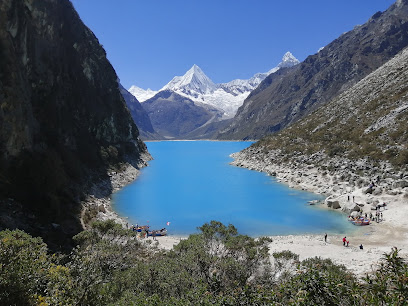
Parque Nacional Huascarán
Discover the breathtaking landscapes and rich biodiversity of Parque Nacional Huascarán, Peru's premier national park and a UNESCO World Heritage site.
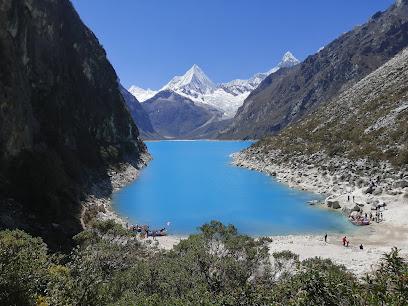
Sitio Arqueológico Chavín de Huántar
Unveil the mystique of Chavín de Huántar, a UNESCO World Heritage site showcasing the brilliance of ancient Peruvian civilization amidst stunning Andean landscapes.
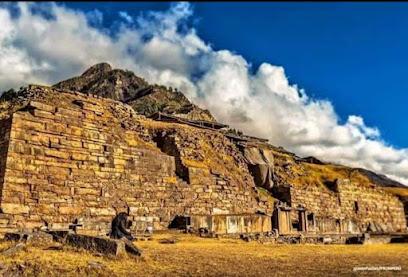
Chavin National Museum
Explore the Chavín National Museum in Chavín de Huantar, a journey through ancient Peruvian history and culture with stunning artifacts and rich heritage.
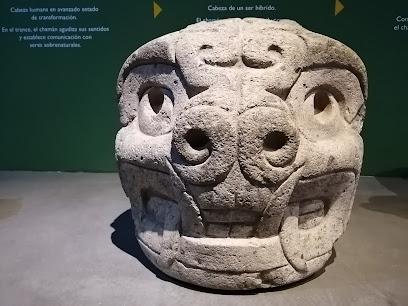
Mirador de Rataquenua
Discover the stunning panoramic views of Huaraz at Mirador de Rataquenua, a must-visit tourist attraction in the heart of the Andes.
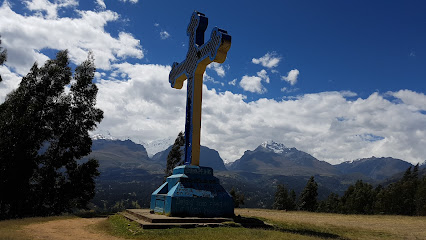
Templo de Wilcahuain
Explore Templo de Wilcahuain, a remarkable archaeological site in Peru, blending ancient history with local culinary experiences in a picturesque setting.
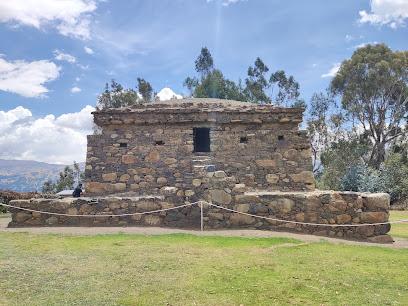
Regional Museum of Ancash
Explore Peru's vibrant history at the Regional Museum of Ancash in Huaraz, showcasing ancient artifacts and cultural treasures.
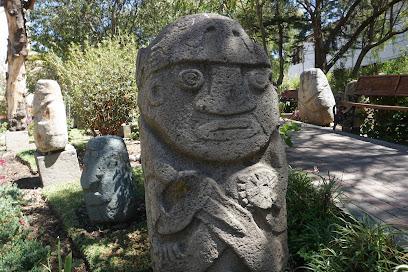
Túnel Punta Olímpica
Explore the breathtaking Túnel Punta Olímpica in Peru, an engineering marvel offering stunning views and adventure for every traveler.

Querococha lake
Explore the stunning Querococha Lake in Peru, a perfect blend of natural beauty, adventure, and cultural richness – a must-see destination for every traveler.
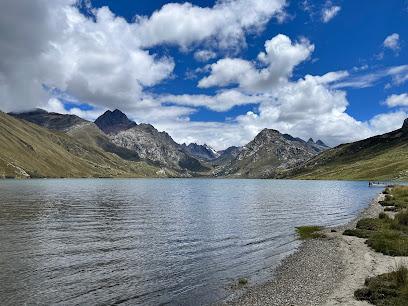
Churup Lake
Discover the breathtaking beauty of Churup Lake, a serene alpine oasis in the heart of the Peruvian Andes, ideal for adventure seekers and nature lovers.
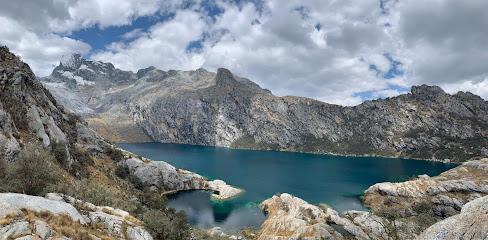
Top Adrenaline - Zipline Huaraz
Soar through the Andes at Top Adrenaline - Zipline Huaraz, where thrilling adventures meet breathtaking mountain views.

Callejon de Huaylas
Discover the breathtaking landscapes and rich traditions of Callejon de Huaylas, a hidden gem in the Peruvian Andes perfect for nature lovers and adventurers.
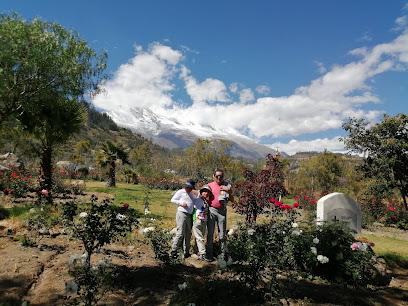
Waullac
Discover the ancient mysteries of Waullac, a captivating archaeological site near Huaraz, where history meets stunning Andean landscapes.
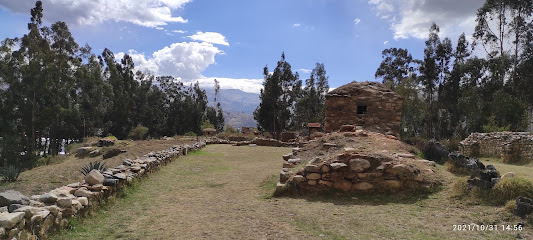
Huaraz Zipline Adventures
Experience the thrill of soaring above the Andes at Huaraz Zipline Adventures, an exhilarating amusement park surrounded by breathtaking mountain views.
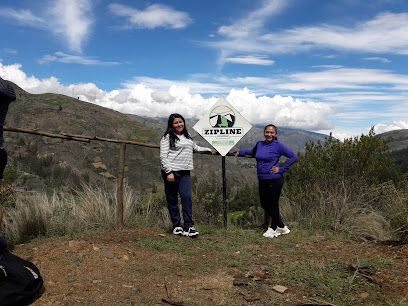
CORDILLERA BLANCA SUMMIT
Explore the breathtaking beauty of Cordillera Blanca Summit in Huaraz, Peru – a paradise for adventure seekers and nature enthusiasts alike.

Essential places to dine
Don Cuy
Discover authentic Peruvian flavors at Don Cuy in Huaraz – a delightful dining experience awaits you!
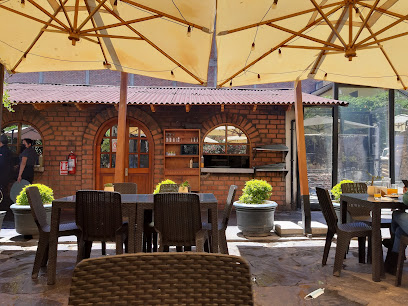
El Fogón
Experience authentic Peruvian cuisine at El Fogón in Huaraz - where every dish tells a story of flavor and tradition.
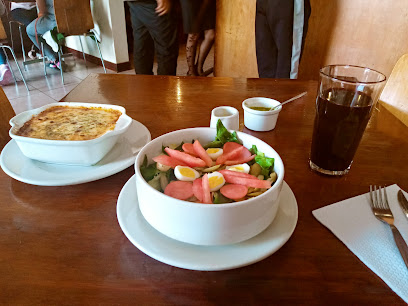
Trivio Resto Bar
Experience exquisite Peruvian flavors at Trivio Resto Bar in Huaraz – where culinary tradition meets modern dining.
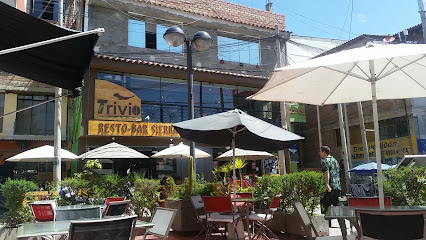
Cafe Andino
Experience the flavors of Peru at Cafe Andino, where cozy ambiance meets exceptional cuisine in the heart of Huaraz.
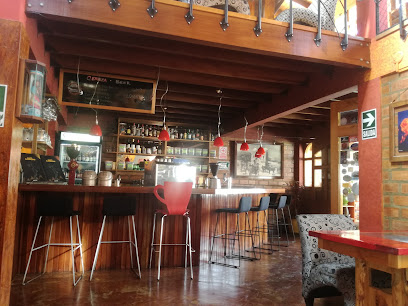
Manka Fusión Artesanal
Experience exquisite dining at Manka Fusión Artesanal in Huaraz - where traditional Peruvian flavors meet modern culinary artistry.
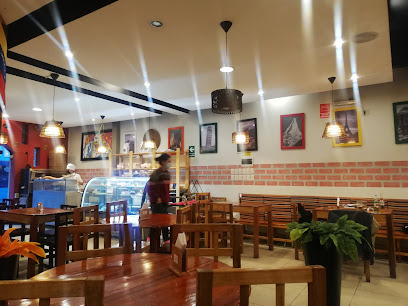
Mi Comedia - Pizzeria
Discover authentic Italian pizza in Huaraz at Mi Comedia - Pizzeria, where every bite is crafted with passion and tradition.
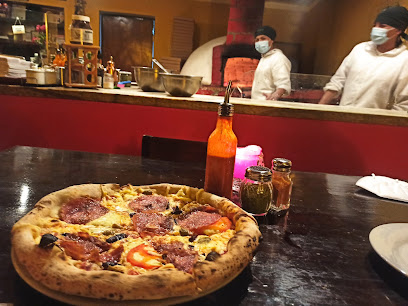
Creperie Patrick
Discover authentic French crepes and delightful cuisine at Creperie Patrick in Huaraz, Peru—a must-visit for food lovers!

EL RINCONCITO MINERO
Experience authentic Peruvian cuisine at El Rinconcito Minero in Huaraz – a culinary delight amidst breathtaking landscapes.
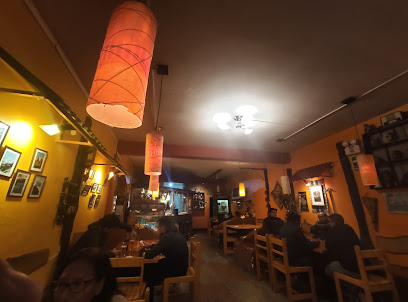
La Casita del Mago
Experience authentic Peruvian cuisine in a magical setting at La Casita del Mago in Huaraz - where every meal tells a story.
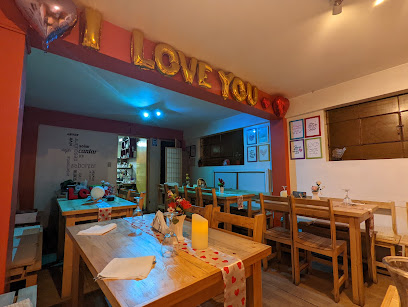
PAULINO'S INDIAN CUISINE
Experience authentic Indian cuisine in Huaraz at Paulino's – where every dish tells a story through rich flavors and spices.
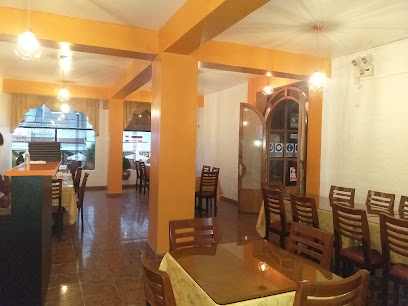
Calima - Restaurant & Café
Discover authentic Peruvian flavors at Calima Restaurant & Café in Huaraz – where tradition meets taste.
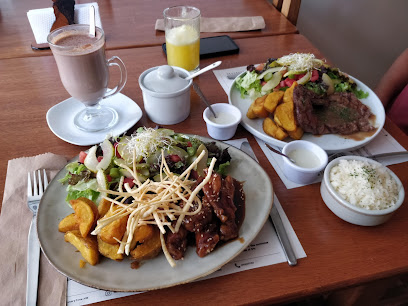
Wayta - El Chef Andino
Savor authentic Andean flavors at Wayta - El Chef Andino in Huaraz, where tradition meets modern cuisine amid breathtaking mountain views.

Kaypacha Restaurante
Experience authentic Peruvian cuisine at Kaypacha Restaurante in Huaraz - where every dish tells a story.
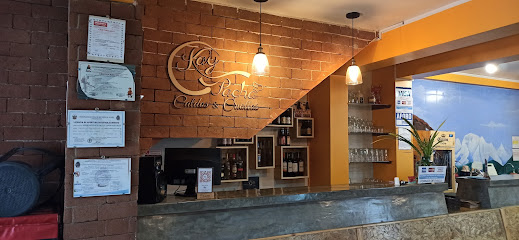
Ajo Picante
Discover the authentic taste of Peru at Ajo Picante, where traditional flavors meet modern dining in Huaraz.

D’Dos Restaurant
Experience authentic Peruvian cuisine at D’Dos Restaurant in Huaraz, where every dish tells a story.
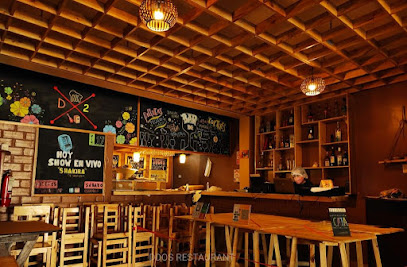
Markets, malls and hidden boutiques
Mercado Central de Huaraz
Explore the heart of Huaraz at Mercado Central, a vibrant market brimming with local flavors, crafts, and cultural experiences.
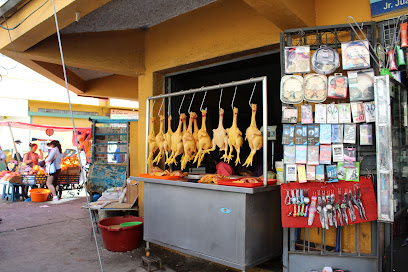
Cafe Andino
Discover Café Andino in Huaraz, where rich local coffee and delicious food meet a warm, inviting atmosphere in the heart of the Andes.
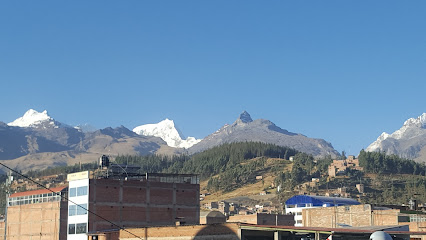
Novaplaza
Discover the vibrant Novaplaza in Huaraz, your go-to supermarket for local and international products, offering a unique shopping experience.

Trujillo Market
Discover the vibrant flavors and cultural richness of Trujillo Market in Huaraz, Peru - a must-visit destination for food lovers and cultural enthusiasts.

Golden Plaza
Discover the vibrant shopping experience at Golden Plaza, Huaraz's premier destination for retail, dining, and entertainment.

Montañas Mágicas Outdoors Equipment
Discover the best outdoor gear and cycling equipment at Montañas Mágicas, your adventure hub in Huaraz, Peru. Gear up for unforgettable experiences in the Andes.

Radioshack
Experience the vibrant music culture of Huaraz at Radioshack, where diverse melodies and local artists come alive in every CD.
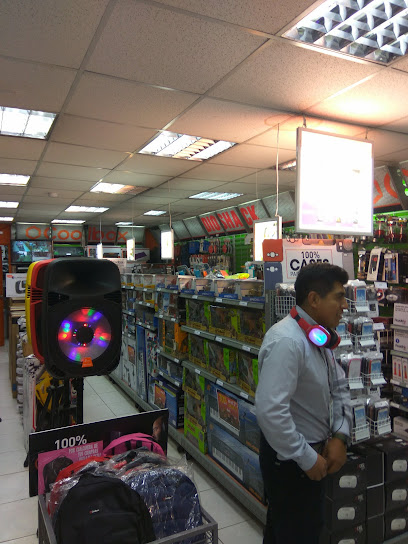
Lensun
Explore Lensun, Huaraz's premier electronics store, where technology meets local culture in an unforgettable shopping experience.

VARMOS
Explore Varmós in Huaraz for unique clothing that reflects the vibrant culture and artistry of Peru's mountainous region.
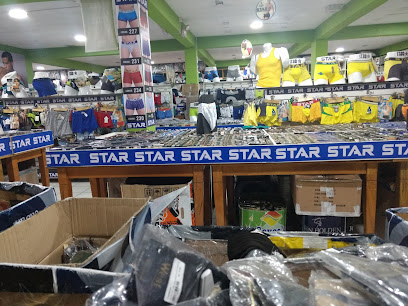
La Curacao
Explore cutting-edge electronics at La Curacao, Huaraz's leading destination for tech enthusiasts and savvy shoppers alike.

Tiendas El
Discover the charm of local fashion at Tiendas El in Huaraz, Peru – a must-visit clothing store for unique styles and souvenirs.

Perutambo Biomarket
Explore the authentic flavors of Huaraz at Perutambo Biomarket, a vibrant grocery store featuring local produce, artisanal goods, and culinary treasures.

Topitop
Discover fashionable clothing in Huaraz at Topitop, a delightful store offering stylish apparel for every occasion.

Platanitos Huaraz Av Luzuriaga
Explore Platanitos Huaraz, your go-to destination for stylish shoes and accessories in the heart of Huaraz, Peru.

Maurÿ Store
Explore Maurÿ Store in Huaraz for unique clothing that embodies local culture and style, perfect for fashion-forward travelers.

Essential bars & hidden hideouts
Trece Buhos
Discover Trece Buhos in Huaraz - a vibrant grill restaurant offering delicious local flavors in a warm and welcoming atmosphere.
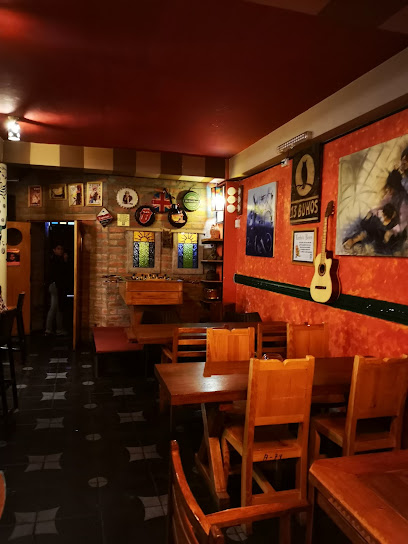
Trivio Resto Bar
Discover Trivio Resto Bar in Huaraz: A delightful culinary experience with fresh local flavors and a warm atmosphere perfect for all diners.
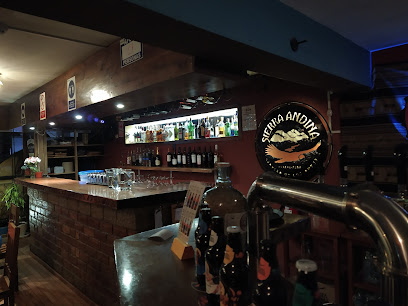
Cafe Andino
Experience the vibrant flavors of Peru at Cafe Andino, a cozy restaurant and coffee shop in Huaraz, perfect for food lovers and travelers alike.
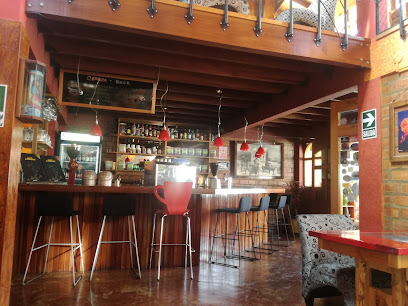
El Tambo
Experience the vibrant nightlife of Huaraz at El Tambo, where music and dance create unforgettable memories.

Manka Fusión Artesanal
Discover the vibrant flavors of Peru at Manka Fusión Artesanal, a culinary paradise in the heart of Huaraz, perfect for food lovers.
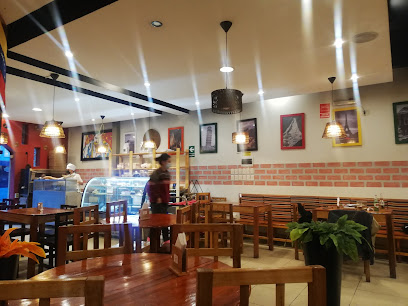
Calima - Restaurant & Café
Discover the authentic flavors of Peru at Calima - Huaraz's premier restaurant and café for a delightful culinary experience.
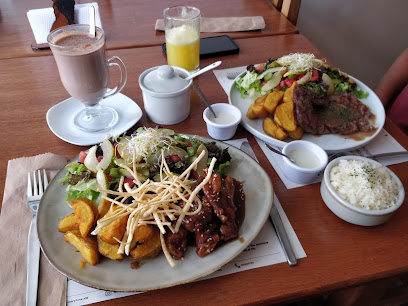
El Tío Enrique
Discover the vibrant nightlife at El Tío Enrique, Huaraz's favorite bar for locals and tourists alike, offering delicious drinks and a lively atmosphere.
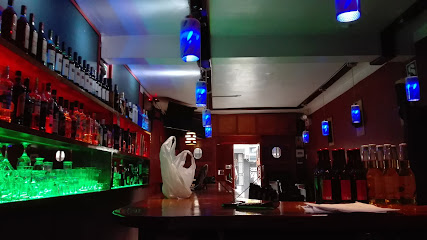
Kuya Kuya Coctelería Profesional Novoandina - Huaraz
Discover the vibrant flavors of Peru at Kuya Kuya Coctelería Profesional Novoandina, where innovative cocktails meet a lively atmosphere.
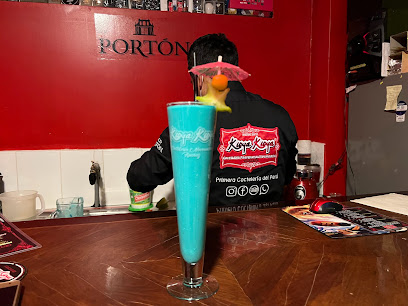
BonusTrack Huaraz Bar (Chavo's)
Discover the lively nightlife at BonusTrack Huaraz Bar, where local charm meets a vibrant atmosphere perfect for unwinding after a day of adventure.

John House Restobar
Experience the best of Peruvian flavors at John House Restobar in Huaraz, where every meal tells a story of culinary delight.
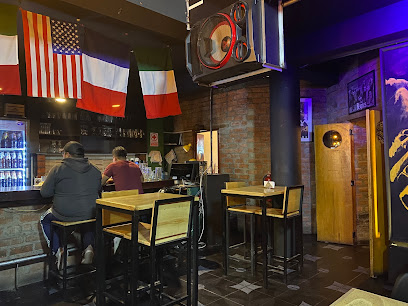
Pasaje150
Experience the vibrant nightlife of Huaraz at Pasaje150, where culture meets great drinks in a lively atmosphere.
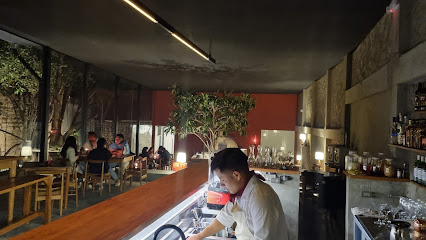
Cima Restaurant and Bar
Experience the best of Peruvian and international cuisine at Cima Restaurant and Bar, nestled in the picturesque Parque Ginebra, Huaraz.
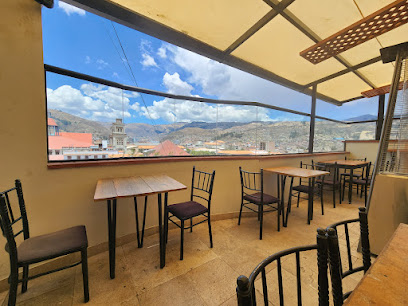
Mantra Club
Experience Huaraz's vibrant nightlife at Mantra Club, where refreshing drinks and a lively atmosphere await every visitor.

Previous - Lounge Bar
Discover the vibrant nightlife of Huaraz at Previous - Lounge Bar, where refreshing cocktails and a lively atmosphere await you.

El Alquimista Rooftop Bar
Experience stunning mountain views and creative cocktails at El Alquimista Rooftop Bar in Huaraz, a perfect blend of relaxation and vibrant nightlife.

Travel experiences inspired by this city
Explore more travel diariesLocal Phrases
-
- Hello¡Hola!
[O-la] - Goodbye¡Adiós!
[Ah-dee-ohs] - YesSí
[See] - NoNo
[Noh] - Please/You're welcomePor favor/De nada
[Por fa-vor/De nah-dah] - Thank youGracias
[Gra-see-as] - Excuse me/SorryDisculpe/Perdón
[Dees-kool-pe/Pair-dohn] - How are you?¿Cómo estás?
[Koh-moh es-tahs] - Fine. And you?Bien. ¿Y tú?
[Bee-en. Ee too] - Do you speak English?¿Hablas inglés?
[Ah-blas een-glays] - I don't understandNo entiendo
[Noh en-tee-en-doh]
- Hello¡Hola!
-
- I'd like to see the menu, pleaseMe gustaría ver el menú, por favor
[May goo-sta-ree-ah ver el meh-noo, por fa-vor] - I don't eat meatNo como carne
[Noh koh-moh kahr-neh] - Cheers!¡Salud!
[Sah-lood] - I would like to pay, pleaseMe gustaría pagar, por favor
[May goo-sta-ree-ah pah-gar, por fa-vor]
- I'd like to see the menu, pleaseMe gustaría ver el menú, por favor
-
- Help!¡Ayuda!
[Ah-yoo-dah] - Go away!¡Vete!
[Veh-teh] - Call the Police!¡Llama a la Policía!
[Yah-ma ah lah Po-lee-see-ah] - Call a doctor!¡Llama a un médico!
[Yah-ma ah oon meh-dee-koh] - I'm lostEstoy perdido
[Es-toy pair-dee-doh] - I'm illEstoy enfermo
[Es-toy en-fehr-moh]
- Help!¡Ayuda!
-
- I'd like to buy...Me gustaría comprar...
[May goo-sta-ree-ah kohm-prar] - I'm just lookingSolo estoy mirando
[So-lo es-toy mee-ran-doh] - How much is it?¿Cuánto cuesta?
[Kwan-to kweh-sta] - That's too expensiveEso es demasiado caro
[Eh-so es de-ma-see-ah-doh ka-ro] - Can you lower the price?¿Puede bajar el precio?
[Pwe-de ba-har el preh-syoh]
- I'd like to buy...Me gustaría comprar...
-
- What time is it?¿Qué hora es?
[Keh oh-rah es] - It's one o'clockEs la una
[Es lah oo-nah] - Half past (10)Media hora (10)
[Meh-dee-ah oh-rah (10)] - MorningMañana
[Mah-nyah-nah] - AfternoonTarde
[Tahr-deh] - EveningNoche
[Noh-cheh] - YesterdayAyer
[Ah-yehr] - TodayHoy
[Hoy] - TomorrowMañana
[Mah-nyah-nah] - 1Uno
[Oo-no] - 2Dos
[Dohs] - 3Tres
[Tres] - 4Cuatro
[Kwah-troh] - 5Cinco
[Seenkoh] - 6Seis
[Sehs] - 7Siete
[Syeh-teh] - 8Ocho
[Oh-choh] - 9Nueve
[Nweh-veh] - 10Diez
[Dyehs]
- What time is it?¿Qué hora es?
-
- Where's a/the...?¿Dónde está...?
[Dohn-deh es-tah] - What's the address?¿Cuál es la dirección?
[Kwahl es lah dee-rehk-syon] - Can you show me (on the map)?¿Me puedes mostrar (en el mapa)?
[May pwe-des moh-strar (en el mah-pah)] - When's the next (bus)?¿Cuándo es el próximo (bus)?
[Kwan-doh es el proh-see-moh (boos)] - A ticket (to ....)Un boleto (a ....)
[Oon bo-leh-toh (ah ....)]
- Where's a/the...?¿Dónde está...?
History of Huaraz
-
Huaraz, located in the Callejón de Huaylas valley, has a rich history that dates back thousands of years. The region was originally inhabited by the Recuay culture, known for their advanced pottery and stone architecture. The Recuay people thrived between 200 BCE and 600 CE, and their influence can still be seen in the archaeological sites scattered around Huaraz.
-
In the 15th century, the Inca Empire expanded its territory into the Callejón de Huaylas. Huaraz became a significant settlement within the empire, serving as a strategic point for trade and military operations. The Incas introduced advanced agricultural techniques and integrated the local population into their vast administrative network.
-
Following the Spanish conquest of the Inca Empire in the 16th century, Huaraz was incorporated into the Viceroyalty of Peru. The Spanish founded the city of Huaraz in 1574. During the colonial period, Huaraz was an important center for mining and agriculture, contributing significantly to the economy of the Spanish colony.
-
Huaraz played a role in Peru's struggle for independence from Spain in the early 19th century. The city witnessed several battles and skirmishes between patriot and royalist forces. After Peru gained independence in 1821, Huaraz continued to develop as a regional hub, fostering agriculture, commerce, and culture in the newly established republic.
-
One of the most significant events in Huaraz's modern history is the devastating earthquake that struck on May 31, 1970. The earthquake, with a magnitude of 7.9, caused widespread destruction in Huaraz and the surrounding region. Thousands of people lost their lives, and much of the city's infrastructure was destroyed. The disaster led to a massive reconstruction effort and reshaped the urban landscape of Huaraz.
-
Today, Huaraz is a vibrant city that serves as a gateway to the stunning landscapes of the Cordillera Blanca mountain range. It is a popular destination for outdoor enthusiasts, offering opportunities for trekking, climbing, and exploring the rich cultural heritage of the region. The city's history is preserved in its museums, traditional festivals, and the resilience of its people.
Huaraz Essentials
-
Huaraz is located in the Ancash region of Peru, approximately 420 kilometers north of Lima. The most common way to reach Huaraz is by bus, with several companies offering daily services from Lima. The journey typically takes around 7-8 hours. Alternatively, you can fly to Comandante FAP Germán Arias Graziani Airport in Anta, which is about 23 kilometers from Huaraz. However, flights are limited and may not operate daily.
-
Within Huaraz, taxis and moto-taxis are the most common forms of transportation. They are affordable and readily available. Public buses and combis (minibuses) are also an option for getting around the town and to nearby villages. For those looking to explore the surrounding areas at their own pace, renting a car is possible, though the mountainous terrain can be challenging for inexperienced drivers.
-
The official currency in Peru is the Peruvian Sol (PEN). Credit and debit cards are widely accepted in hotels, restaurants, and larger shops in Huaraz, but it is advisable to carry some cash for smaller establishments and rural areas. ATMs are available throughout the town, but it is wise to withdraw sufficient cash before heading to remote areas.
-
Huaraz is generally safe for tourists, but it is important to take standard precautions. Avoid walking alone at night in unfamiliar areas and keep an eye on your belongings in crowded places. The neighborhood of La Soledad has been noted for higher crime rates targeting tourists, so it is best to be extra cautious or avoid this area.
-
In case of emergency, dial 105 for police assistance, 116 for fire services, and 106 for medical emergencies. The local hospital, Hospital Víctor Ramos Guardia, is equipped to handle most medical issues. It is recommended to have travel insurance that covers medical emergencies. Pharmacies are also available for minor health issues and over-the-counter medications.
-
Fashion: Do dress in layers, as the weather can change rapidly in the mountains. Avoid wearing flashy jewelry. Religion: Do show respect when visiting religious sites by dressing modestly and speaking quietly. Public Transport: Do be prepared for crowded conditions on public buses and combis. Don't expect strict adherence to schedules. Greetings: Do greet people with a friendly 'hola' or 'buenos días.' A handshake is a common form of greeting. Eating & Drinking: Do try local dishes like ceviche and cuy (guinea pig). Don't drink tap water; always opt for bottled or purified water.
-
To experience Huaraz like a local, visit the Mercado Central to shop for fresh produce and local crafts. Engage with locals, who are often friendly and eager to share their culture. Don't miss out on the Sunday markets in nearby villages for an authentic Andean experience. For outdoor enthusiasts, take advantage of the numerous trekking and climbing opportunities in the Cordillera Blanca and Huayhuash ranges.
Trending Landmark in Huaraz
Nearby Cities to Huaraz
-
Things To Do in Trujillo
-
Things To Do in Lima
-
Things To Do in Huancayo
-
Things To Do in Chiclayo
-
Things To Do in Ayacucho
-
Things To Do in Ica
-
Things To Do in Piura
-
Things To Do in Loja
-
Things To Do in Machu Picchu
-
Things To Do in Cusco
-
Things To Do in Cuenca
-
Things To Do in Iquitos
-
Things To Do in Macas
-
Things To Do in Guayaquil
-
Things To Do in Salinas
















